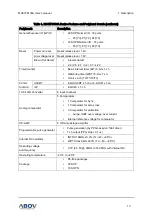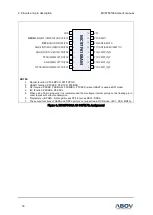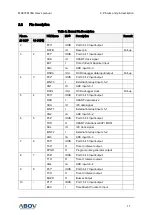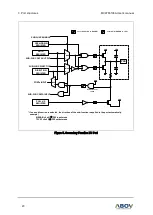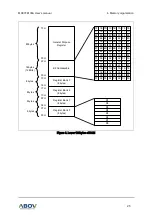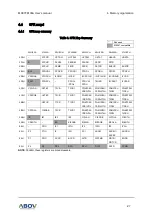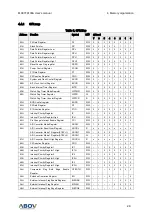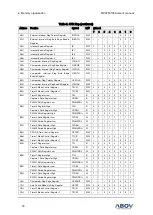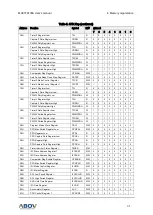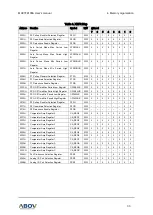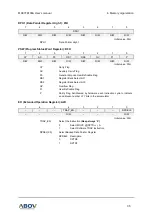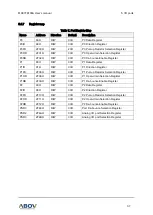
4. Memory organization
MC97F6108A User’s manual
24
4.2
Data memory
Internal data memory space is divided into three blocks, which are generally referred to as lower
128bytes, upper 128bytes, and SFR space. Internal data memory addresses are always one byte wide,
which implies an address space of 256bytes. In fact, the addressing modes for the internal data memory
can accommodate up to 384bytes by using a simple trick. Direct addresses higher than 7FH access
one memory space, while indirect addresses higher than 7FH access a different memory space. Thus
as shown in Figure 8, the upper 128bytes and SFR space occupy the same block of addresses, 80H
through FFH, although they are physically separate entities.
The lower 128bytes of RAM are present in all 8051 devices as mapped in Figure 9. The lowest 32bytes
are grouped into 4 banks of 8 registers. Program instructions call out these registers as R0 through R7.
Two bits in the Program Status Word select which register bank is in use. This allows more efficient use
of code space, since register instructions are shorter than instructions that use direct addressing.
The next 16bytes above the register banks form a block of bit-addressable memory space. The 8051
instruction set includes a wide selection of single-bit instructions, and the 128 bits in this area can be
directly addressed by these instructions. The bit addresses in this area are 00H through 7FH.
All of the bytes in the lower 128bytes can be accessed by either direct or indirect addressing. The upper
128bytes of RAM can only be accessed by indirect addressing. These spaces are used for data RAM
and stack.
FFH
80H
7FH
00H
FFH
80H
Upper 128bytes
Internal RAM
(Indirect Addressing)
Special Function Registers
128bytes
(Direct Addressing)
Lower 128bytes
Internal RAM
(Direct or Indirect
Addressing)
Figure 8. Data Memory Map




